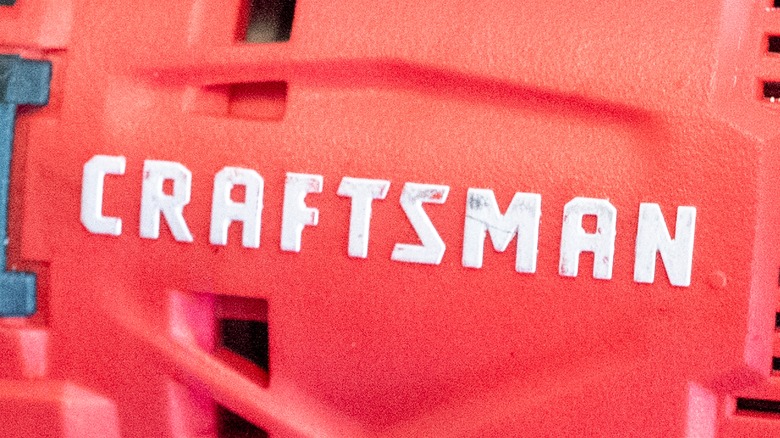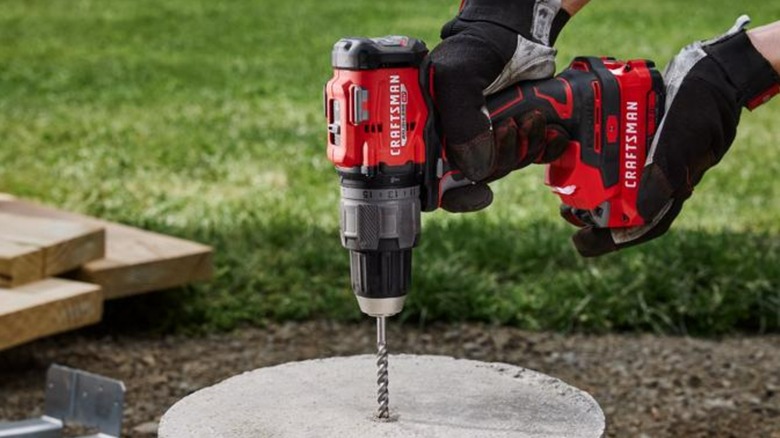Are Craftsman Tools Still Made In The US?
For some folks, there can be a lot of patriotism tied up in one's tools. Thus, finding tools that are still manufactured in the United States is of the utmost importance. Throughout the past several decades, many tool brands established in the U.S. sought out manufacturing opportunities overseas — be it to increase production or save a few dollars. As it turns out, this is largely the case for a brand that has spent years marketing itself as synonymous with the red, white, and blue: Craftsman.
The Craftsman tool brand may have built a "Made in America" image for itself in the decades since bursting onto the scene in 1927, but it's no longer exclusively American. Many of the brand's tools today are manufactured in other countries. For example, there are Craftsman sockets and ratchets created in China, tape measures produced in Thailand, wrenches manufactured in India, and wire strippers made in Taiwan. The packaging or, potentially, a stamp on the tool itself, should reveal where it was built.
While this may imply that Craftsman no longer belongs alongside brands that still make tools in the U.S., that's not exactly the case. The brand does still pride itself on making some tools in the country it was founded.
Some Craftsman tools are still made in the US
With a little searching, it's possible to find Craftsman tools made in the United States. We're not just talking about old products, either; there are plenty of modern Craftsman tools still produced in the U.S. The company has a manufacturing facility in Fort Mill, South Carolina, which is responsible for hammer drills, impact drivers, and other tools, utilizing globally-sourced materials to get these toolbox essentials made.
It turns out that there are also American-made variants of some of the tools it makes internationally. Craftsman has socket sets and tape measures that are specifically advertised as being made in America. Going beyond smaller items, Craftsman has kept the production of lawn and garden equipment, as well as storage options, within America. It may not be the most robust assortment of products for those seeking tools made within the country, but it's better than the entire brand being off-limits due to outsourcing.
Unfortunately, it looks like this is as good as things are getting when it comes to Craftsman tools made in the U.S. The company that owns and makes Craftsman tools has made it clear that full, or even expanded, U.S. manufacturing isn't on the priority list.
Don't expect Craftsman to expand US production
At this point, the bulk of Craftsman's tools are made overseas. Yes, some are still made in the United States, showing that American production is entirely possible in many cases, but this doesn't seem to be proof enough that manufacturing in the country is the way to go. Craftsman began outsourcing its product decades ago, with estimates placing this shift somewhere in the late 1990s or early 2000s. Seeing as this initiative has only expanded since then, it's fair to say the move paid off for the brand — and the company that purchased it in early 2017, Stanley Black and Decker.
With Stanley Black and Decker behind it, it seemed that there was a chance Craftsman would return its focus to American manufacturing. It not only expressed its desire to reintroduce American manufacturing post-acquisition, but also introduced a Made in U.S.A. tool line, proudly displaying the American flag across the packaging and turning its country of origin into a selling point. Unfortunately, this was about the extent of Black and Decker's Craftsman revamp. Plans were put in place in 2019 to expand American manufacturing with a plant in Fort Worth, Texas. Ultimately, though, this $90 million location closed its doors in early 2023.
As things stand, Craftsman will remain a largely international brand when it comes to its manufacturing efforts. It may have some tools still made in the U.S., and Craftsman remains one of the few toolbox brands still manufacturing in the U.S., but odds are that the range won't increase in the foreseeable future.


